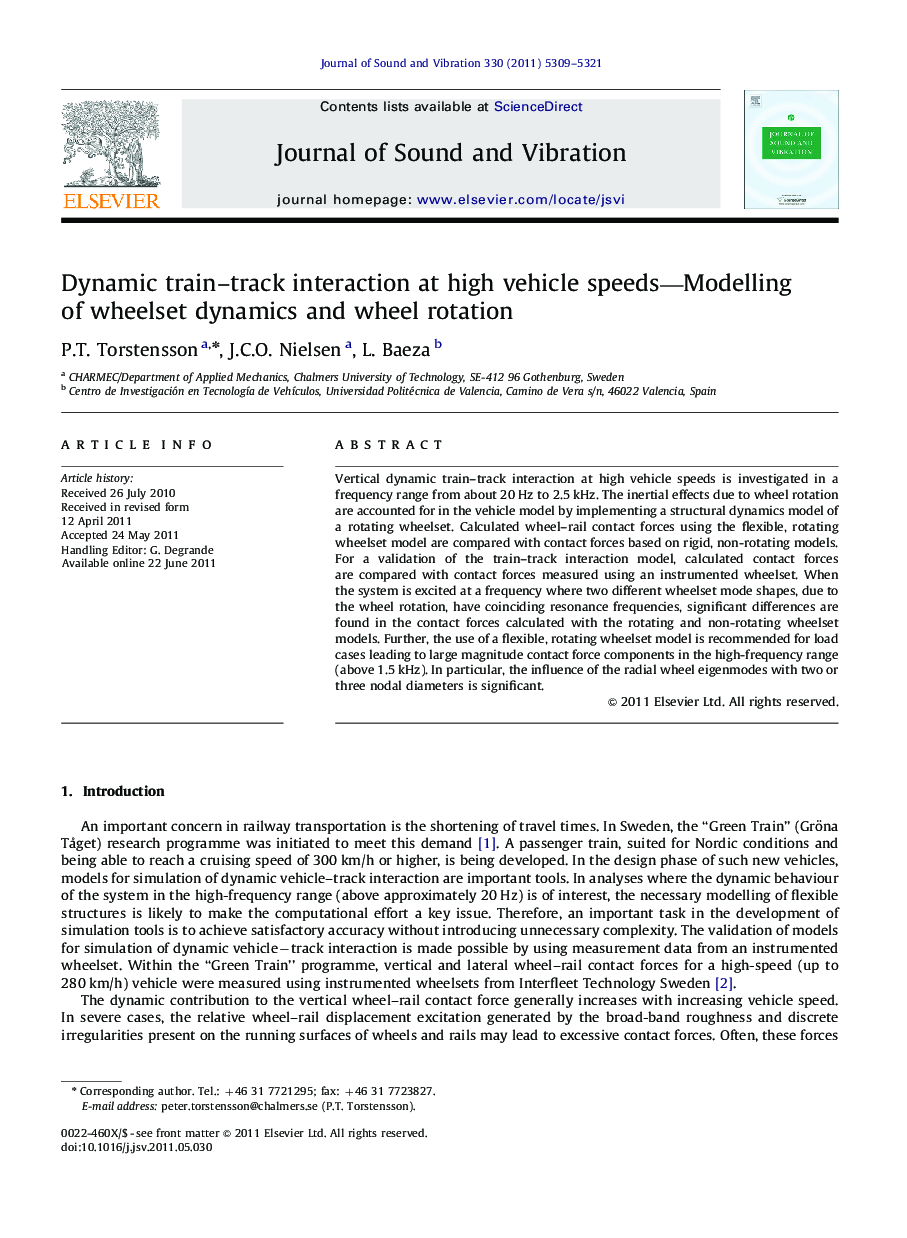| کد مقاله | کد نشریه | سال انتشار | مقاله انگلیسی | نسخه تمام متن |
|---|---|---|---|---|
| 288646 | 509636 | 2011 | 13 صفحه PDF | دانلود رایگان |

Vertical dynamic train–track interaction at high vehicle speeds is investigated in a frequency range from about 20 Hz to 2.5 kHz. The inertial effects due to wheel rotation are accounted for in the vehicle model by implementing a structural dynamics model of a rotating wheelset. Calculated wheel–rail contact forces using the flexible, rotating wheelset model are compared with contact forces based on rigid, non-rotating models. For a validation of the train–track interaction model, calculated contact forces are compared with contact forces measured using an instrumented wheelset. When the system is excited at a frequency where two different wheelset mode shapes, due to the wheel rotation, have coinciding resonance frequencies, significant differences are found in the contact forces calculated with the rotating and non-rotating wheelset models. Further, the use of a flexible, rotating wheelset model is recommended for load cases leading to large magnitude contact force components in the high-frequency range (above 1.5 kHz). In particular, the influence of the radial wheel eigenmodes with two or three nodal diameters is significant.
► Forces developed in the wheel–rail contact show large influence from inertial effects due to wheel rotation.
► At frequencies corresponding to radial modes of the wheel, the influence from wheel rotation is particularly high.
► A flexible and rotating wheelset model is recommended for cases with excitation in the frequency range above 1.5 kHz.
Journal: Journal of Sound and Vibration - Volume 330, Issue 22, 24 October 2011, Pages 5309–5321